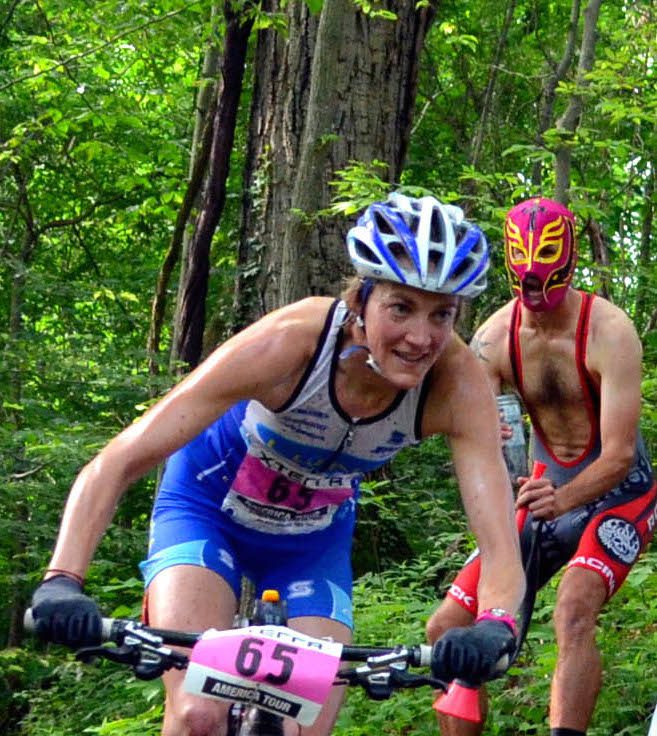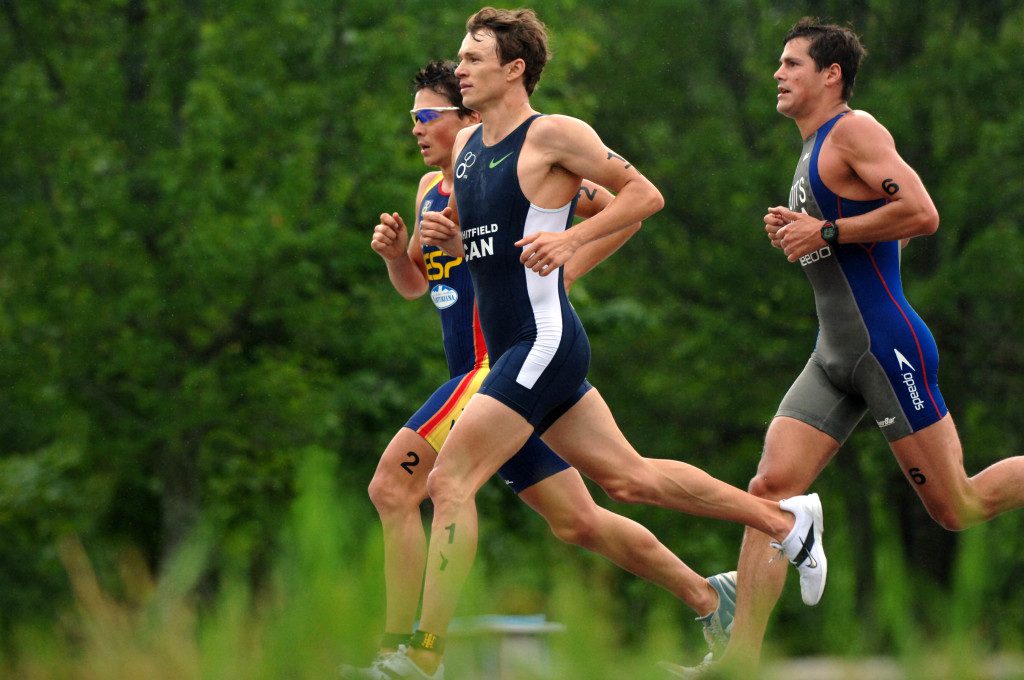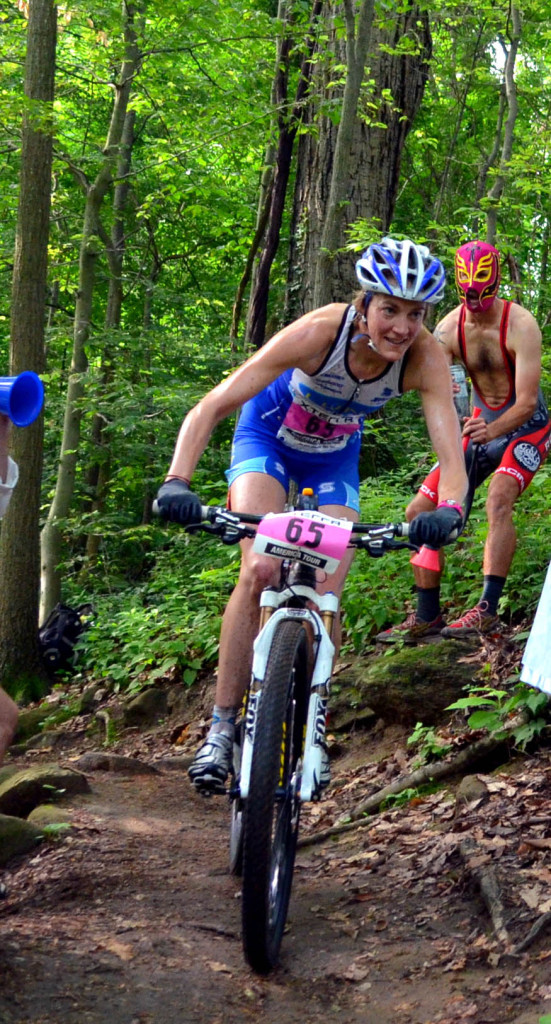Find Your Flow with These Mental Training Tips

by Melanie McQuaid
At the 1992 NBA Finals, Michael Jordan sank his sixth consecutive three pointer, looked at the announcer and described his dominant performance as: “It’s beyond me. It’s just happening by itself.” As a triathlete, it might be difficult to imagine that it’s possible to have complete dissociation with the discomfort of racing for hours at a time, but it can happen. Many athletes have felt themselves fall under a trance or experience a level of focus where nothing but the act of racing enters their mind while performing. In this state of flow, the body can actualize the training that’s been absorbed without interruption by distracting thoughts or extraneous actions.
Flow, a feeling of being carried by a current of water, of invincibility, of unshakeable focus and of effortless performance is a term coined by Mihaly Csikszentmihalyi in his 1990 book, Flow: The Psychology of Optimal Experience. Csikszentmihalyi was fascinated by artists who became so lost in their work that they would neglect sleep, food and water for hours or days at a time. In his research he developed this theory of flow and found it applied it to many facets of life including sports, work, education, music and spirituality.
An athlete with confidence in the preparation and training leading up to race day will have confidence on the start line. Remembering a key session or a race where you had a breakthrough performance, can do wonders for motivation.
Olympian gold and silver medallist Simon Whitfield knows much about the optimal mental state. He says:
“For me it was all preparation. If I felt I had done everything possible to prepare then my ideal mental state followed. I was able to relax. I arrived at the start line of my best races thinking it was simply time to express myself, to express my fitness and the result would follow.”
Smart goal setting and planning will also create small victories with which confidence is built. A good training plan and periodization will result in good workouts to build confidence in skills and preparation.

Whitfield explains he could tell when a good performance was imminent:
“I had indications, I used to call the feeling ‘I’m rolling,’ where my coach and I would get a sense from my training that I was on a roll and session after ses- sion was going well. Even the sessions that didn’t go as well I was able to ‘roll’ past. When I was able to carry this feeling into races I performed at my best. I remember in 2000 running a final workout before the Olympics with Jasper Blake at Bond University on the Gold Coast, in Australia. We rolled through a perfectly executed workout, hit the paces we were targeting, not faster or slower, but precisely and one week later I had the race of my career.”
Similarly, confidence can be immediately gained from feedback within the race. An emotional boost from a good performance will help narrow the focus on continuing that good performance. A good race strategy builds this feeling of control and keeps thoughts focused on the task at hand. A sense of control happens within the race if events are unfolding according to the race plan.
The second element in flow is distraction control. To be completely absorbed, block all but the most immediate and important stimulus, and to lose sense of time, thoughts must be trained on execution. Practicing distraction control is beneficial to achieve this level of focus. Pain, discomfort, other athlete’s performances and other factors that are uncontrollable must be eliminated from consciousness in order to lose oneself in the performance.
Minimizing thoughts to action items leaves no time for reflection and thus no distracting thoughts about the outcome. Thoughts that are poisonous to performance are thoughts that reflect on the race outcome before it’s over and poor management of the pain of maximal effort. Some athletes feel the most difficult situation to control is performing through pain or enduring “suffering.” Hillary Stellingwerff, a Canadian 1,500 m track runner and Olympian, offers her advice on achieving a better mindset while performing through pain:
“For me it’s about reframing the negative connotation around pain; I associate my ability to run through the pain as performing to my max ability and running as fast as I possibly can. I know if I’m running through pain I’m running as hard as I can and getting the most out of myself and that’s all I can expect on any given race day. ”
Csikszentmihalyi and his fellow researchers identified the nine factors necessary to experience flow:
1. Challenge-skills balance
Where there is confidence that skills meet the task at hand.
2. Action-awareness merging
The state of being completely absorbed in an activity, with tunnel vision that shuts out everything else.
3. Clear goals
When one knows exactly what is required and what one desires to accomplish.
4. Unambiguous feedback
Constant, real-time feedback that allows adjustment of tactics to adapt (for example, splits in a race or relative placing during the event).
5. Concentration
Completely blocking all distraction with laser-beam focus.
6. Sense of control
When one feels that actions can affect the outcome of the challenge.
7. Loss of self-consciousness
When one is not constantly self-aware of success during the event.
8. Transformation of time
One loses track of time due to total focus on the moment.
9. Autotelic experience
When one feels internally driven to succeed even without outside rewards (doing it “because you love it”).
Trent Stellingwerff, a runner turned exercise physiologist, run coach and sports nutritionist, also understands how to work through pain. “For me, I try to not think about pain – pain is a feeling that is out of your control. Instead, I try to think about severe discomfort. Discomfort is something (at least for me) that I can manage and control. I also think about the limits of physiology. The body has evolved to protect itself by shutting down before critical status is met. In other words, it is very, very difficult to actually physically put yourself in the hospital. I use this reverse “logic” that I always have more to give when my brain says stop.”
Both of these perspectives are excellent for reframing the experience of pain. Thinking that pain of “suffer- ing” is bad or dangerous might reduce performance due to perceived safety risk. Making the experience of feeling pain a positive part of racing, as Hillary Stellingwerff does, and imagining this reflects a good performance, will be a powerful tool on race day.
For Danelle Kabush, a PhD Mental Performance Consultant and professional Xterra athlete with the Luna Team, knowing how to find flow in races to perform and to endure pain is essential to success. Kabush suggests using the following questions to help focus your mental preparation for racing.

• What will be the most challenging part of the training/race for you? What will you focus on to stay present?
• How will you break down the training/racing into manageable segments?
• Where can you take some mental recovery (just relax)?
• Where will require 100 per cent mental focus?
• What are the things that could most challenge your best mental focus such as unexpected success or an event not going well? What about the challenge of a technical, tactical or mechanical error? How will you refocus if this happens?
Achieving flow is possible for all athletes. The key to racing “in the zone” is to love racing and have fun while performing. Focusing on positive, constructive thoughts and immediate needs allows one to maintain distraction control for the duration of the race. To “suffer” well, turn all the sensations of pain into positive reinforcement that a great performance is underway.
In the end, attitude is a big determinant of outcome. The more an athlete loves competing the better that athlete will perform. There is a choice in attitude just as there is a choice in how one prepares for a race. Hearing that an athlete was having “the time of their life” or having “so much fun” often goes along with a performance that would be described as “in the zone.” The pleasure of competing can usurp all other feelings and distractions and instantly create flow. Chrissie Wellington was famous for smiling furiously while setting world records over the Ironman distance. Her supreme athletic talent aside – maybe her smile hints at her secret mental strength.
This article appears in the current issue of TMC 9.5.
